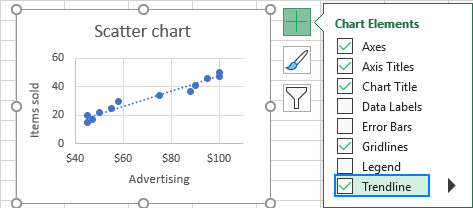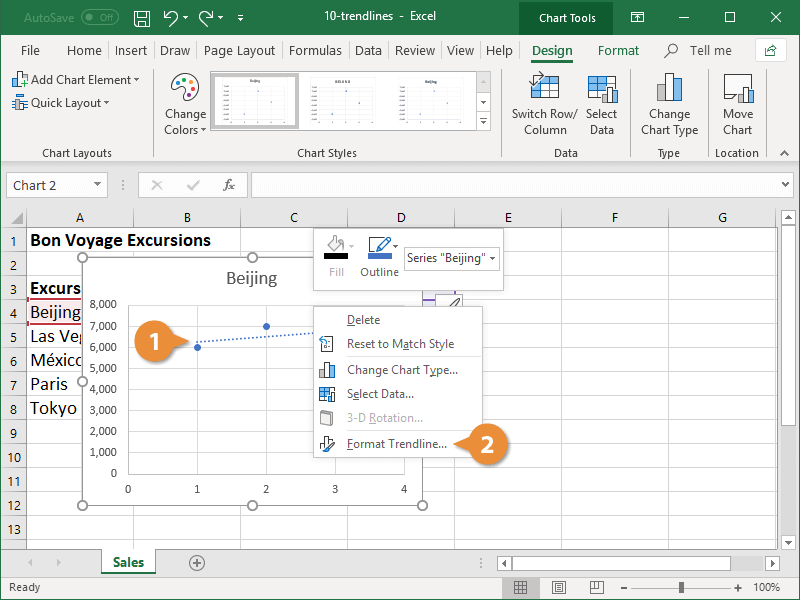
#Excel trendline options update#
Thus, you need to follow the steps each time you update the data.

The downside of this approach is the lack of auto updates. Standard Errors: Enable this if you want Excel to calculate standard errors. Output Range: Range where you want the moving average values to be populated.Ĭhart Output: Enable this if you want Excel to generate a chart. Labels in the first row: Enable this option if the first row includes a title like ours. Input Range: Range of data you want to calculate. Select Moving Average item and press OK.įill in the inputs in the Moving Average window according to your data and click OK to calculate simple moving average. You can find its icon under the Data tab > Data Analysis.Ĭlicking the icon opens Data Analysis dialog with a list of tools available.

This add-in includes lots of tools for statistical calculations. The final approach is to use the Analysis ToolPak add-in of Excel. Optionally, you change auto-generated name under Trendline Name. Select Moving Average under Trendline Options and set the desired period. How do I exclude data from an Excel graph On the errant data point in the graph: Right-click, left-click, right-click, left-click. This action will display the format Trendline section in the properties pane. Click Trendline and select More Trendline Options from the bottom of the dropdown menu that appears.
#Excel trendline options plus#
Once the chart is created, use the Add Elements, the plus (+), button near the chart and click More Options item under Trendline category. Excel charts can generate a simple moving average line automatically. If all you want to do is to show moving averages on your chart and you do not want to spend time on calculations, there is a quicker way.

#Excel trendline options how to#
You can learn about relative reference in How to create an Excel absolute reference and relative reference. Select the cell near the 3 rd value and type the formula with the AVERAGE function referring the first 3 values. Let's say we have a data set of values in column and want to calculate moving averages by 3 data points. You can calculate SMA by taking the arithmetic mean of the previous set of values over a specified period.įor example, to calculate a moving average for 3 values, you need to find the average of previous 3 values including the corresponding value.Ĭalculating simple moving average by AVERAGE Functionīecause SMA refers the average of previous data points, you can use the AVERAGEfunction. In this guide, we’re going to show you how to calculate simple moving averages in Excel using three methods.ĭownload Workbook What is Simple Moving Average (SMA)?Īs the name suggests, this is the simplest form of a moving average. Moving average calculations is a common way of smoothing data to reduce the effects of random, short-term fluctuations.


 0 kommentar(er)
0 kommentar(er)
